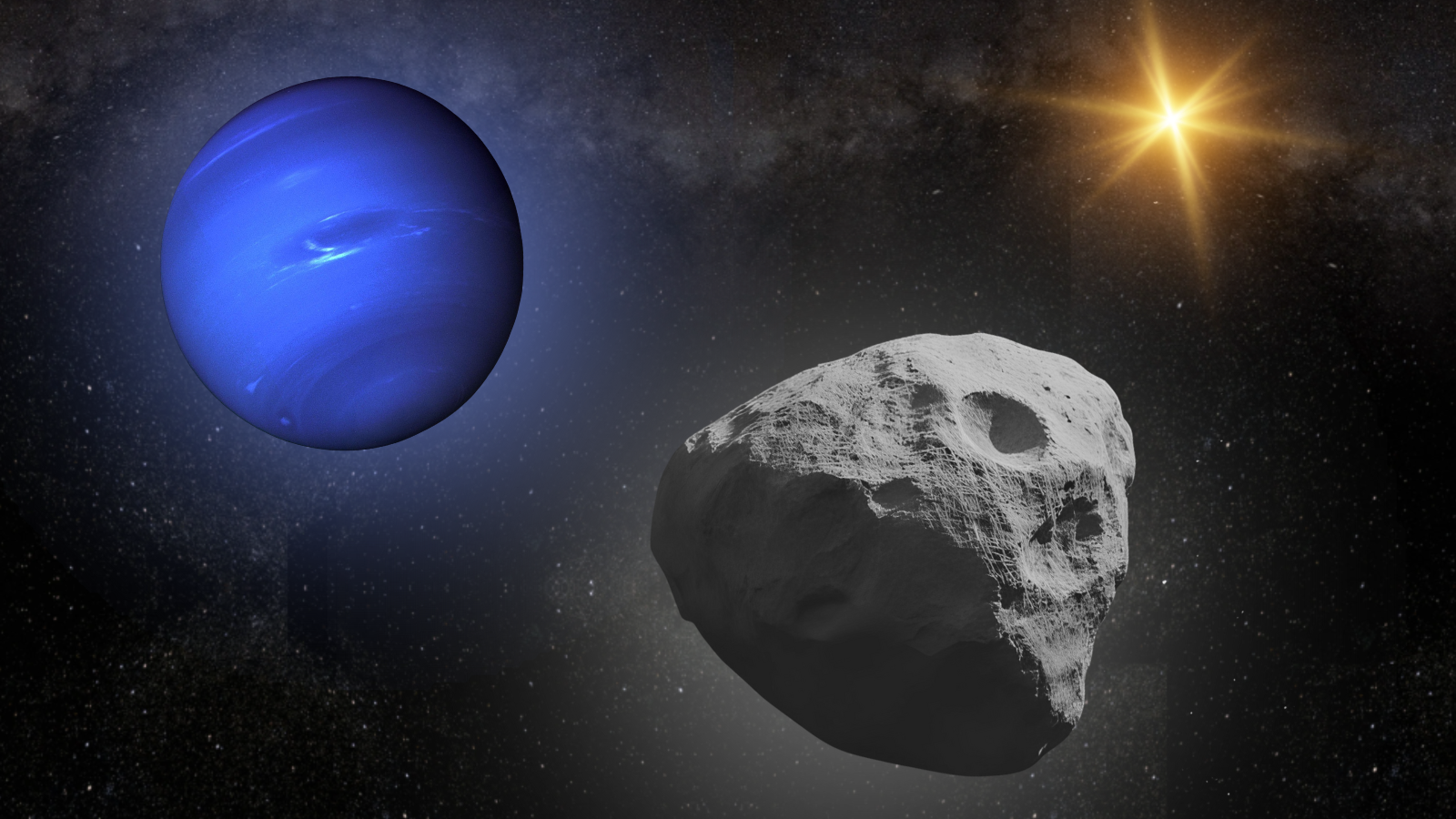Astronomers have found that a weird space rock at the edge of the solar system is locked in a rhythmic dance with Neptune.
The object, designated 2020 VN40, is part of a family of distant solar system objects called trans-Neptunian objects (TNOs). 2020 VN40 is the first object discovered that orbits the sun once for every ten orbits Neptune makes. Considering that one Neptunian year lasts 164.8 Earth years, that means 2020 VN40 has one heck of a long year, lasting around 1,648 years or 19,776 months on Earth!
The team behind this research thinks that 2020 VN40’s ponderous orbital dance with Neptune may have come about when it was temporarily snared by the gravity of the ice giant planet. Thus, this discovery could help researchers better understand the dynamics of bodies at the edge of the solar system.
“This is a big step in understanding the outer solar system,” team leader Rosemary Pike from the Center for Astrophysics | Harvard & Smithsonian said in a statement. “It shows that even very distant regions influenced by Neptune can contain objects, and it gives us new clues about how the solar system evolved.”
The orbital rhythm of 2020 VN40 was discovered in data from the Large inclination Distant Objects (LiDO) survey. LiDO uses the Canada-France-Hawaii Telescope with backup from the Gemini Observatory and the Walter Baade Telescope to search the outer solar system for weird objects.
In particular, LiDO specializes in hunting TNOs with orbits that take them far above and below the orbital plane of Earth around the sun. These are regions of the solar system that have thus far only been sparsely explored by astronomers.
“It has been fascinating to learn how many small bodies in the solar system exist on these very large, very tilted orbits,” LiDO team member and University of Regina researcher Samantha Lawler said.
The highly tilted path of 2020 VN40 finds it at an average distance from the sun equivalent to 140 times the distance between Earth and our star.
However, the most interesting element of the orbit of 2020 VN40 is its resonance with the orbit of Neptune. Other bodies rhythmically aligned with Neptune make their closest approaches to the sun, their perihelion, when Neptune is at its greatest distance from our star, or its aphelion.
Defying this trend, 2020 VN40 is at perihelion when Neptune is also close to the sun. That’s if one were looking at it from above the solar system, with the tilt of 2020 VN40 meaning that this TNO and Neptune are not actually close together; the TNO is actually far below the solar system.
This also separates 2020 VN40 from other resonant TNOs, which tend to stay within the plane of the solar system when they make close approaches to the sun.
“This new motion is like finding a hidden rhythm in a song we thought we knew,” team member and University of California Santa Cruz scientist Ruth Murray-Clay said. “It could change how we think about the way distant objects move.”
Revealing the orbital strangeness of 2020 VN40 suggests that solar system objects with highly tilted orbits can adopt novel and unexpected types of movement.
The hunt is now on for more bodies like 2020 VN40, with the newly operating Vera C. Rubin Observatory set to play a key role in this investigation.
“This is just the beginning,” team member and Planetary Science Institute researcher Kathryn Volk said. “We’re opening a new window into the solar system’s past.”
The 2020 VN40 results were published on July 7 in The Planetary Science Journal.
